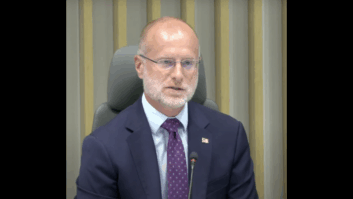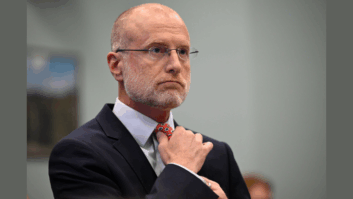
Text has been updated to add a sampling of FCC questions in the last paragraph.
The latest NPRM from the FCC could ultimately lead to a new expense for U.S. radio and TV broadcasters that don’t already have backup power at their transmission sites.
The commission has launched a notice of proposed rulemaking to improve the reliability and resiliency of communications networks during disasters. It also wants better situational awareness in their aftermath.
The proposal considers changes to the Disaster Information Reporting System, or DIRS, which is a web-based system used by broadcasters and other communication providers to report service outages to the FCC. Participation currently is voluntary, but the proposal asks if it should be mandatory for participants following a disaster.
The NPRM, which specifically mentions Hurricane Ida and the damage it did to the Gulf Coast region in late August, also seeks ways to mitigate the effects of power outages on communications networks in the aftermath of such events.
The FCC in the proposal asks detailed questions about how backup power can be deployed to reduce the frequency of power-related service disruptions.
The commission raised the possibility of requiring backup power for participants in DIRS and NORS, the Network Outage Reporting System, and that list includes broadcasters.
“To the extent that the commission were to adopt backup power requirements, providers subject to them, potentially including cable providers, Direct Broadcast Satellite providers, Satellite Digital Audio Radio Service, TV and radio broadcasters, Commercial Mobile Radio Service and other wireless service providers, could potentially be required to take steps to make their networks more resilient to power outages,” according to the notice.
The loss of power during Ida is addressed at length in the NPRM. The FCC says cell tower sites that lacked backup power infrastructure were particularly hard hit.
“Hurricane Ida, as well as recent hurricane and wildfire seasons, earthquakes in Puerto Rico and severe winter storms in Texas demonstrate that America’s communications infrastructure remains susceptible to disruption during disasters,” the FCC wrote.
The commission says it will consider the scope of obligations for broadcasters and that it is mindful that providers subject to any new rules would incur costs if the proposals are adopted.
It’s not the first time the commission has considered backup power requirements for communications providers, according to footnotes in the NPRM.
Following Hurricane Katrina, the FCC in 2007 required Commercial Mobile Radio Service (CMRS) providers and local exchange carriers to maintain emergency backup power — for a minimum of 24 hours for assets inside central offices and for eight hours at cell sites.
The wireless industry appealed the requirements on several grounds and the commission ultimately deleted its backup power requirements four years later.
The FCC also seeks fresh comment on any alternatives to on-site backup power that have proven successful or have the potential to reduce the frequency, duration or severity of disruptions to communications services caused by power outages. The NPRM also includes a call for improved coordination between communications service providers and power companies.
In conclusion, the NPRM asks about the possible benefits of fostering mutual aid during disasters in segments of the communications industry, such as cable, wireline and broadcast, through sharing of physical assets.
The FCC’s Oct. 26 open meeting will feature a virtual field hearing about Hurricane Ida and further discussion of ways to improve the resilience of this country’s communications networks.
A comment period on the NPRM (PS Docket 21-346) will commence following publication in the Federal Register.
Here is a snippet of the questions being asked by the FCC:
“We seek comment on what steps service providers would need to take with respect to backup power deployment to significantly reduce the number of communications disruptions caused by power outages. How many hours of on-site backup power would be appropriate at their facilities to significantly reduce the frequency of power-related service disruptions? Are there events or geographic areas in which more hours of backup power are needed than others? To maximize the effectiveness of backup power solutions, should backup power be provisioned at certain critical points in communications infrastructure, and if so, at which points? In general, how should the Commission define or otherwise identify facilities and equipment that are critical to ensuring that emergency communications can be transmitted in the aftermath of a disaster? Are there differences across different types of communications networks or geographies where they are located that are relevant to deployment of backup power solutions or performance during power outages more generally?”







